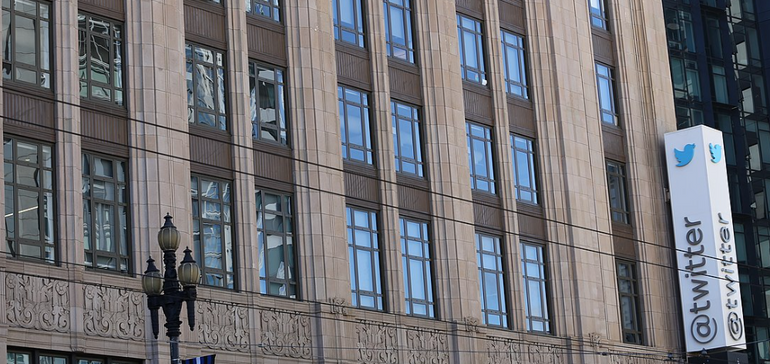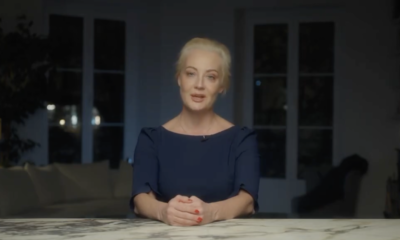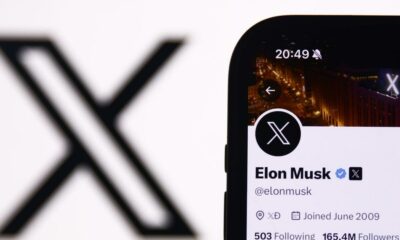SOCIAL
Musk’s Plans Around Verification, Moderation, and Payments on Twitter are Slowly Becoming Clear

As we head into Thanksgiving, the various controversies and developments around Twitter continue to evolve, with new boss Elon Musk still throwing around ideas and making sweeping changes at the app.
And while there is still a question around whether Twitter will even remain online, due to reduced oversight of its systems, if it does, the next steps will see major shifts in direction at the app.
Catching you up, here’s a look at all the latest key developments at Twitter HQ, which could impact the platform moving forward.
Delayed verification
Musk’s first major move at Twitter, his $8 verification for all plan, has been delayed once again, with Musk noting that they need to establish better systems to combat impersonation before moving ahead.
Holding off relaunch of Blue Verified until there is high confidence of stopping impersonation.
Will probably use different color check for organizations than individuals.
— Elon Musk (@elonmusk) November 22, 2022
The controversial program was launched to some users earlier this month, before being shut down after a couple of days due to confusion caused by impersonators in the app. Last week, Musk set a new target date of November 29th for a re-launch of the program, but now, that date seems to be off the cards too, as Twitter explores the potential ramifications of the checkmark-for-sale process.
Look, this is a confusing, misguided initiative – and that’s not to say that Musk is wrong about everything or to question his grand plan for the app (calm down, Elon fanfolk). Musk may well be able to get Twitter on a path to growth, and I would bet on his team eventually getting things together. But an $8 monthly fee for blue checkmarks isn’t it.
I suspect that Musk will eventually see this – with the concession of gray ‘Official’ ticks already a tacit acknowledgment of the flaws in this approach.
The vectors for potential manipulation are far too high – though I do think the alternative color options for checkmarks of different kinds could be a better approach towards verifying actual humans in the app, if Twitter also incorporates a form of ID checking into the process.
As I noted at the first suggestion of Musk’s checkmark/verification program, rather than selling blue ticks, Musk would be better off giving these new verified users a different color of checkmark, which would clarify that they are a real person, while also leaving the existing and established verification markers as is, limiting confusion in the app.
The problem is, people won’t pay $8 for these alternative markers – but I suspect that most users aren’t going to pay $8 for blue ticks either.
But maybe, with an improved Twitter Blue package, Elon can still make this into a more appealing offering.
We’ll find out when it eventually gets re-launched.
Content Moderation – Musk Style
Musk’s communicated vision of a Content Moderation Council, which would be made up of academics, civil rights leaders and other experts, and would rule on content decisions in the app, now appears to be in tatters – or at least, it doesn’t seem like it’s going to have the influence or power over Twitter’s moderation process as Musk implied when he first floated the concept a few weeks back.
As noted, within days of taking over at the app, and in an effort to reassure advertisers that he wasn’t going to let Twitter become a ‘free-for-all hellscape’, Musk said that Twitter would formulate a moderation council to oversee its biggest decisions.
Twitter will be forming a content moderation council with widely diverse viewpoints.
No major content decisions or account reinstatements will happen before that council convenes.
— Elon Musk (@elonmusk) October 28, 2022
Note the specific comment about reinstatements – with users calling on Musk to reinstate former President Donald Trump’s account, Musk tried to placate them with this stance, which meant that he no longer had to make a quick decision on the Trump case specifically.
Except, then he did.
Over the weekend, Musk decided to let the people decide, by holding a Twitter poll on whether Trump should be allowed back on the app. The poll, which garnered more than 15 million votes, narrowly went in favor of allowing the former President to return – and in contradiction of his previous stance, Musk then reactivated Trump’s account.
Which, apparently, caught Twitter’s sales team off-guard, who had been working to reassure ad partners that Musk wouldn’t just arbitrarily make such decisions.
Turns out, he will – while Musk has also now stated that the Content Moderation Council, if and when it is established, won’t have the final say over any major decisions.
As reported by The Verge’s Alex Heath, Musk has explained to Twitter staff that:
“This is an advisory council. I will hear what they have to say and I will either agree with it or I won’t.”
So it’s really Elon making the calls. If there was any confusion around who’s in charge, and who, ultimately, will decide what is and is not allowed, this is the answer
Which is probably not what ad partners wanted to hear.
Musk has also stated that Alex Jones will not be allowed back on the app, because of his personal views on Jones’ past actions.
So again, if there were any question, it’s Elon who’s writing the rules. No one else.
Staff changes
After cutting Twitter’s staff headcount by over 64% (some reports have suggested even more), Musk has now laid down a new set of regulations for Twitter’s remaining employees, which includes the proviso that they now need to send Musk himself weekly updates of what they’re working on, along with examples of code for engineers.
The approach is emblematic of Musk’s Twitter management strategy – Musk has already told all staff that they’ll be expected to work ‘long hours at high intensity’ in order to get the app back on track, with this additional micro-management approach adding extra impetus and pressure, in order to keep things progressing.
Which may seem extreme – but then again, when you’re on the line for $44 billion, you’d imagine that there would be a strong desire for oversight.
Musk has also cut staff benefits, in order to reduce costs, though he has also reassured those remaining that the staff cuts are done for now, with the company actively hiring new engineering and sales staff.
On that front, Musk has also tasked his team with setting up engineering teams in lower cost markets, like Indonesia, which could be another way to maintain momentum, and get the app back on track.
Crypto payments
Another aspect of Musk’s Twitter takeover which is far less clear at this stage, but potentially far more significant, is his push to facilitate payments via tweet.
Musk, who co-founded PayPal back in 2000, has a long-held interest in improving the ACH transfer process, while Musk has also been a big supporter of certain crypto projects, including his favored Dogecoin currency.
Some have speculated that, given Musk’s history, and the fact that Binance is an equity investor in Musk’s Twitter, Musk will be looking to build streamlined payments into Twitter, in order to convert the platform into a key transfer portal, and then expand that into in-stream shopping, bill payments, remittance, etc.
Again, it’s still early, but this week, Musk reportedly informed Twitter employees that he is indeed looking to build crypto payments into the app, and that he expects payments to eventually be ‘more valuable than all the rest of Twitter combined’.
This is a difficult area, and one which all social platforms have explored at different times. Meta’s likely best-placed to make payments work, and it’s been trying to integrate Meta Pay into developing markets, like India and Indonesia, for years, in order to establish Facebook and WhatsApp as the equivalent of China’s WeChat in those regions.
WeChat, of course, has become a key utility in China, and is used by over a billion people to do everything online, from buying train tickets, to grocery shopping, to booking doctors appointments.
In the past, Meta’s also attempted to convert Messenger into the western version of WeChat, with the integration of various expanded functionalities, but it’s never caught on in the same way, but in developing regions, there is still a chance that WhatsApp, for example, could act as its equivalent platform in India.
But getting local approval for payments has proven challenging, and it’s taking time to expand habitual behaviors in the app.
Interestingly, Musk has also flagged his intent to build his own, western version of WeChat, with an app concept that he calls ‘X’, which, in his view, will be ‘the everything app’. Musk has said that he views Twitter as ‘an accelerant to X’, and while the full blueprint is not yet clear, it does seem that introducing payments on Twitter would be a key step towards that broader goal.
But again, western audiences haven’t shown any real interest in a localized version of WeChat, so he will have a task ahead of him. But big-picture thinking is what he does, so…
—
There’s a lot going on at Twitter HQ, and most of it is still in flux, but over time, we’re starting to get some more solid frameworks emerging as to where Musk and his new team will be headed with the app.
All of this will take time to develop, especially with such a significant reduction in headcount, but I do expect that Twitter will stabilize at some point, as Musk settles onto some more viable, concrete directions for the app.
So long as it doesn’t crash entirely before then.
SOCIAL
Snapchat Explores New Messaging Retention Feature: A Game-Changer or Risky Move?

In a recent announcement, Snapchat revealed a groundbreaking update that challenges its traditional design ethos. The platform is experimenting with an option that allows users to defy the 24-hour auto-delete rule, a feature synonymous with Snapchat’s ephemeral messaging model.
The proposed change aims to introduce a “Never delete” option in messaging retention settings, aligning Snapchat more closely with conventional messaging apps. While this move may blur Snapchat’s distinctive selling point, Snap appears convinced of its necessity.
According to Snap, the decision stems from user feedback and a commitment to innovation based on user needs. The company aims to provide greater flexibility and control over conversations, catering to the preferences of its community.
Currently undergoing trials in select markets, the new feature empowers users to adjust retention settings on a conversation-by-conversation basis. Flexibility remains paramount, with participants able to modify settings within chats and receive in-chat notifications to ensure transparency.
Snapchat underscores that the default auto-delete feature will persist, reinforcing its design philosophy centered on ephemerality. However, with the app gaining traction as a primary messaging platform, the option offers users a means to preserve longer chat histories.
The update marks a pivotal moment for Snapchat, renowned for its disappearing message premise, especially popular among younger demographics. Retaining this focus has been pivotal to Snapchat’s identity, but the shift suggests a broader strategy aimed at diversifying its user base.
This strategy may appeal particularly to older demographics, potentially extending Snapchat’s relevance as users age. By emulating features of conventional messaging platforms, Snapchat seeks to enhance its appeal and broaden its reach.
Yet, the introduction of message retention poses questions about Snapchat’s uniqueness. While addressing user demands, the risk of diluting Snapchat’s distinctiveness looms large.
As Snapchat ventures into uncharted territory, the outcome of this experiment remains uncertain. Will message retention propel Snapchat to new heights, or will it compromise the platform’s uniqueness?
Only time will tell.
SOCIAL
Catering to specific audience boosts your business, says accountant turned coach

While it is tempting to try to appeal to a broad audience, the founder of alcohol-free coaching service Just the Tonic, Sandra Parker, believes the best thing you can do for your business is focus on your niche. Here’s how she did just that.
When running a business, reaching out to as many clients as possible can be tempting. But it also risks making your marketing “too generic,” warns Sandra Parker, the founder of Just The Tonic Coaching.
“From the very start of my business, I knew exactly who I could help and who I couldn’t,” Parker told My Biggest Lessons.
Parker struggled with alcohol dependence as a young professional. Today, her business targets high-achieving individuals who face challenges similar to those she had early in her career.
“I understand their frustrations, I understand their fears, and I understand their coping mechanisms and the stories they’re telling themselves,” Parker said. “Because of that, I’m able to market very effectively, to speak in a language that they understand, and am able to reach them.”Â
“I believe that it’s really important that you know exactly who your customer or your client is, and you target them, and you resist the temptation to make your marketing too generic to try and reach everyone,” she explained.
“If you speak specifically to your target clients, you will reach them, and I believe that’s the way that you’re going to be more successful.
Watch the video for more of Sandra Parker’s biggest lessons.
SOCIAL
Instagram Tests Live-Stream Games to Enhance Engagement

Instagram’s testing out some new options to help spice up your live-streams in the app, with some live broadcasters now able to select a game that they can play with viewers in-stream.
As you can see in these example screens, posted by Ahmed Ghanem, some creators now have the option to play either “This or That”, a question and answer prompt that you can share with your viewers, or “Trivia”, to generate more engagement within your IG live-streams.
That could be a simple way to spark more conversation and interaction, which could then lead into further engagement opportunities from your live audience.
Meta’s been exploring more ways to make live-streaming a bigger consideration for IG creators, with a view to live-streams potentially catching on with more users.
That includes the gradual expansion of its “Stars” live-stream donation program, giving more creators in more regions a means to accept donations from live-stream viewers, while back in December, Instagram also added some new options to make it easier to go live using third-party tools via desktop PCs.
Live streaming has been a major shift in China, where shopping live-streams, in particular, have led to massive opportunities for streaming platforms. They haven’t caught on in the same way in Western regions, but as TikTok and YouTube look to push live-stream adoption, there is still a chance that they will become a much bigger element in future.
Which is why IG is also trying to stay in touch, and add more ways for its creators to engage via streams. Live-stream games is another element within this, which could make this a better community-building, and potentially sales-driving option.
We’ve asked Instagram for more information on this test, and we’ll update this post if/when we hear back.
-

 WORDPRESS6 days ago
WORDPRESS6 days agoTurkish startup ikas attracts $20M for its e-commerce platform designed for small businesses
-

 PPC7 days ago
PPC7 days agoA History of Google AdWords and Google Ads: Revolutionizing Digital Advertising & Marketing Since 2000
-

 MARKETING6 days ago
MARKETING6 days agoRoundel Media Studio: What to Expect From Target’s New Self-Service Platform
-
SEARCHENGINES5 days ago
Daily Search Forum Recap: April 12, 2024
-

 SEO5 days ago
SEO5 days agoGoogle Limits News Links In California Over Proposed ‘Link Tax’ Law
-

 MARKETING7 days ago
MARKETING7 days agoUnlocking the Power of AI Transcription for Enhanced Content Marketing Strategies
-

 SEARCHENGINES6 days ago
SEARCHENGINES6 days agoGoogle Search Results Can Be Harmful & Dangerous In Some Cases
-

 SEO4 days ago
SEO4 days ago10 Paid Search & PPC Planning Best Practices















You must be logged in to post a comment Login